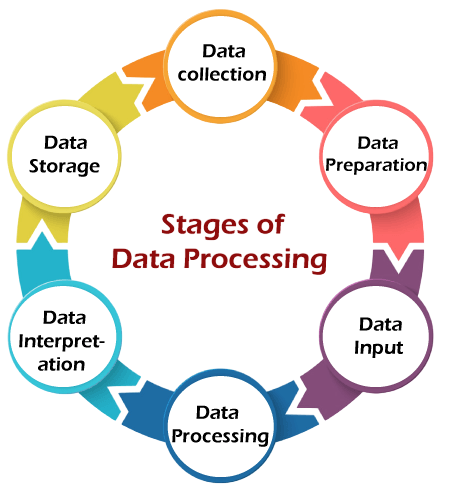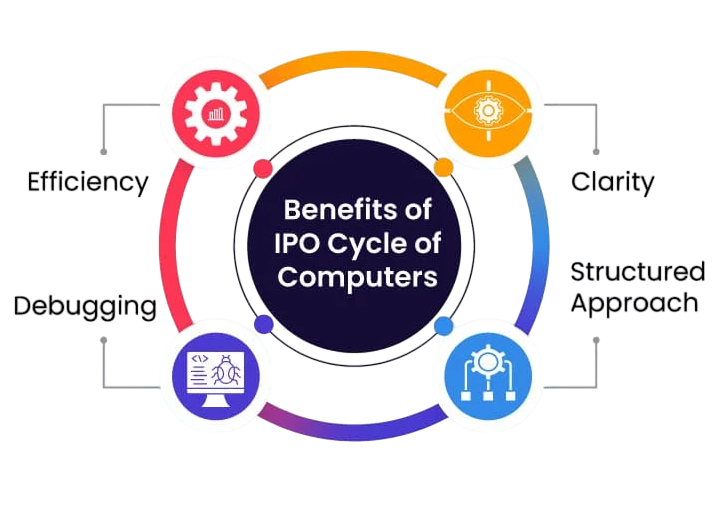
- What is the IPO Model?
- Input Phase Explained
- Processing Stage Overview
- Output Phase in Systems
- Examples of IPO in Real Life
- IPO Model in Programming
- Use of IPO in System Design
- IPO in Business Analysis
- IPO Diagram Creation
- Benefits of IPO Model
- Conclusion
What is the IPO Model?
The IPO model, short for Input-Process-Output, is a foundational concept in computing, system design, and business analysis. At its core, it represents how systems receive data (input), work on it (process), and produce results (output). Though simple in structure, the IPO model is a powerful framework for analyzing, designing, and improving systems in various domains such as software development, hardware architecture, business workflows, and education a systems-thinking approach echoed in Web Developer Training, where learners master the flow of data from input to output through structured design, responsive layouts, and interactive logic. Applying IPO principles helps developers build intuitive, scalable web applications that align with user needs and business goals. Originating in computer science, the IPO model abstracts the way data flows through a system. Whether you’re designing a website, writing a program, or building a supply chain process, the IPO model helps break down complex operations into manageable segments.
To Earn Your Web Developer Certification, Gain Insights From Leading Web Developer Experts And Advance Your Career With ACTE’s Web Developer Courses Today!
Input Phase Explained
The Input phase is the first and perhaps the most crucial part of the IPO cycle. It involves collecting raw data, resources, or stimuli that are needed to produce a result. In computing, concepts like Polymorphism in Oops help define how inputs are interpreted and processed dynamically. Inputs might include data from users, sensors, or external files. In business, inputs may involve materials, labor, and information. Key elements in the Input phase:
- Data Collection: Gathering relevant data or resources.
- Validation: Ensuring the data is accurate and in the correct format.
- Pre-processing: Initial filtering or transformation of data for ease of processing.
Mistakes or flaws during input can lead to faulty outputs, making this phase critical for the reliability of the entire system.
Processing Stage Overview
Once input is received, it is passed to the Processing phase. This is where the actual transformation happens. In this stage, understanding how Literals in Java function can clarify how data is manipulated, calculations are performed, decisions are made, or logic is applied based on a set of instructions or algorithms. Typical processing operations include:

- Arithmetic and Logical Operations
- Data Sorting and Filtering
- Applying Business Logic
- Data Analysis and Interpretation
The processing stage is often powered by code in software systems or machinery in mechanical systems. In a business, this could be represented by workflows or operational procedures.
Examples:
- A calculator computing the sum of two numbers.
- An e-commerce website processing a payment.
- A database updating inventory after a sale.
This stage forms the “engine” of the IPO cycle and determines the quality and relevance of the final output.
Would You Like to Know More About Web Developer? Sign Up For Our Web Developer Courses Now!
Output Phase in Systems
The Output stage delivers the final result of the processing. This can be in the form of a report, a display on screen, a file, or even a physical product. In programming workflows, understanding control flow tools like the Must-Know Goto Statement in Python can influence how outputs are directed and managed. Outputs need to be clearly formatted, accurate, and understandable to the end-user or system receiving them. Types of Outputs:
- Visual (charts, UI results, dashboards)
- Auditory (notifications, alarms)
- Physical (printed documents, products)
- Digital (JSON, Excel files, APIs)
Examples:
- You can declare multiple exceptions separated by commas.
- Only checked exceptions need to be declared using throws.
- Unchecked exceptions (like NullPointerException) do not require declaration.
- If a method calls another method that throws a checked exception, it must either handle it or declare it.
If the output doesn’t align with expectations, it usually indicates an error in the input or processing phase.
Examples of IPO in Real Life
The IPO cycle isn’t limited to software or machines; it exists everywhere from business workflows to educational models making it a universal framework for structured thinking. This systems-based approach is reflected in Web Developer Training, where learners master the flow of data from input to output through responsive layouts, interactive logic, and full-stack development practices. Applying IPO principles helps developers build intuitive, scalable web applications that align with real-world processes.
ATM Machine:
- Input: Card and PIN
- Process: Verification of credentials and balance check
- Output: Cash dispensed or error message
Restaurant Order System:
- Input: Customer order
- Process: Food preparation
- Output: Meal served
Student Grading System:
- Input: Exam scores
- Process: Average calculation, grade assignment
- Output: Final grade report
These examples prove that IPO is a versatile model used across all industries and applications.
IPO Model in Programming
In programming, the IPO model is used to structure and simplify algorithm design. One practical application is learning how to Convert Decimal To Binary In Python, which demonstrates how input is transformed through logic into a meaningful output. Basic Example in Python:
- # Input
- number = int(input(“Enter a number: “))
- # Process
- square = number ** 2
- # Output
- print(f”The square of {number} is {square}”)
This simple example captures the essence of the IPO cycle in just a few lines. Programmers are trained to follow this structure to ensure code clarity and modularity.
In Larger Programs:
- Input comes from files, APIs, or user forms.
- Processing includes loops, conditionals, and function calls.
- Output could be to the console, file, database, or webpage.
Are You Interested in Learning More About Web Developer? Sign Up For Our Web Developer Courses Today!
Use of IPO in System Design
System architects and analysts use IPO diagrams to design and document how data flows through a system. To illustrate flexible input handling, concepts like Method Overloading in Python show how functions can adapt to varying data types and parameters within structured workflows.
Use Cases:
- Designing web applications
- Planning data pipelines
- Modeling financial systems
Benefits in Design:
- Simplicity: Makes complex systems easier to visualize.
- Communication: Helps teams understand system flow.
- Debugging: Easy to isolate which stage caused an error.
An IPO diagram is especially helpful during the requirements gathering phase in software development, allowing stakeholders to contribute even if they lack technical expertise.
IPO in Business Analysis
In business analysis, the Input-Process-Output (IPO) model is a valuable tool for documenting and improving workflows. By breaking down operations, like order fulfillment, analysts can closely examine each stage. This includes customer input, processing steps, and final delivery. In system design, understanding concepts like Dynamic Method Dispatch in Java helps professionals spot operational bottlenecks, eliminate unnecessary steps, and connect business goals with system performance. Additionally, the IPO model lays the groundwork for important initiatives such as Business Process Modeling (BPM) and Business Process Reengineering (BPR). It empowers organizations to boost efficiency, minimize operational friction, and promote ongoing improvement in complex business environments.
IPO Diagram Creation
IPO Diagram Creation an IPO (Input-Process-Output) diagram is a simple but effective visual tool for mapping workflow processes. The basic format includes three clearly labeled columns that show the key stages of any system or procedure. By organizing data systematically, users can easily see how inputs change through specific processes to produce desired outputs. In programming contexts, understanding Identifiers in Python helps clarify how variables and data labels are tracked throughout these transformations. For example, in a scenario for generating student reports, the diagram would show how student IDs and exam scores are processed to calculate averages and create grade reports. Professionals can use different tools like Draw.io, Lucidchart, Microsoft Visio, or even basic pen and paper to brainstorm and create these diagrams. It is important to keep the diagram simple, specific, and actionable. This way, it effectively conveys complex workflows in a clear manner, helping everyone understand quickly and make informed decisions.
Benefits of IPO Model
The IPO model remains relevant even in the age of advanced technologies like AI and cloud computing because of its conceptual clarity.

Key Benefits:
- Modularity: Encourages separation of concerns.
- Error Detection: Makes debugging easier.
- Documentation: Useful for audits and compliance.
- Scalability: Facilitates easier expansion and maintenance.
- Universal Application: Applicable across industries and disciplines.
Conclusion
The Input-Process-Output (IPO) cycle is a fundamental and enduring concept in computing, system design, and business analysis. Its clarity and universality make it an ideal framework for understanding and improving how systems work. Whether you are developing software, analyzing a business process, or teaching logic to students, IPO offers a clear path from data entry to actionable results a structured thinking model that aligns with the design methodologies taught in Web Developer Training, where learners master HTML, CSS, JavaScript, UX principles, and responsive layout techniques. Understanding input-process-output logic enhances clarity in both technical implementation and user-centric design workflows. While it has some limitations in dynamic or real-time environments, the IPO model remains a vital part of system modeling, especially in the initial phases of analysis and design. As systems grow more complex, IPO serves as a conceptual anchor that helps us understand and structure them logically and efficiently. In summary, mastering the IPO model empowers professionals across domains to build better, smarter, and more efficient systems.



